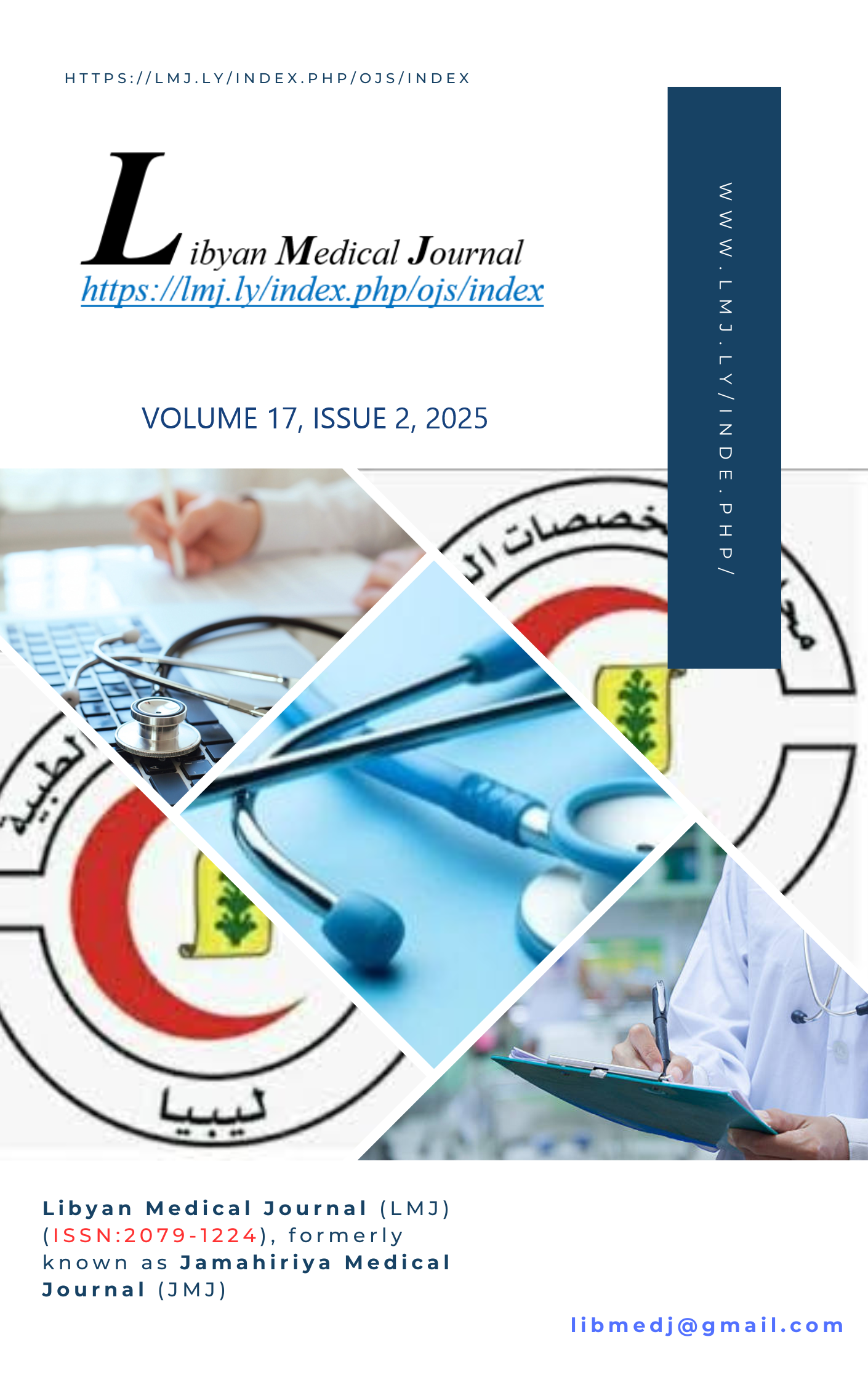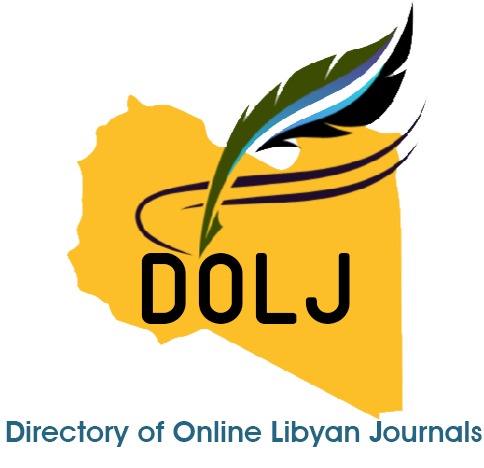Median Diastema Among Libyan Young Adults: Prevalence and Etiology
DOI:
https://doi.org/10.69667/lmj.2517218Keywords:
Diastema, Prevalence, Etiology.Abstract
Maxillary midline diastema is a prevalent aesthetic concern in both mixed and permanent dentition. The space may be occasioned by either a transient malocclusion or by developmental, pathological, or iatrogenic factors. The persistence of a diastema, or gap, between the maxillary central incisors in adults is frequently regarded as an aesthetic or malocclusion problem. Midline diastemas can be categorised as physiological, dentoalveolar, or due to a missing tooth, peg-shaped lateral or midline supernumerary teeth, the proclination of the upper labial segment, a prominent frenum, or self-inflicted by tongue piercing. The present study aims to determine the aetiology and prevalence of midline diastema among a sample of Libyan patients, and to ascertain whether it is more prevalent in males or females. The current cross-sectional study, conducted at private dental clinics throughout Sirte City, employed a random sampling method with a sample size of 482 people (135 males and 347 females) to examine the occurrence and aetiology of midline diastema among orthodontic patients in Sirte City. The measurements collected in the present study were collected in situ as part of the examination of the patient. The subject age range was 15 to 37, and the mean age was 26 years. 482 patients were assessed, and the prevalence of upper midline diastema was 10.37% (50) of subjects. Of these, 9.63% (13) were male and 10.67% (37) were female. There was no statistically significant difference between the prevalence of upper diastema in males and females (p value = 0.720). The most prevalent etiological factors were found to be a highly attached frenum (40%) and generalized spaces (32%). The prevalence of malocclusions was as follows: 10% of patients exhibited flared or rotated incisors, 6% demonstrated supernumerary teeth, and 12% exhibited peg-shaped laterals or congenitally missing laterals.
References
Angle EH. Treatment of malocclusion of the teeth. 7th ed. Philadelphia: S.S. White Dental Manufacturing Co.; 1907:167.
Andrews LF. The six keys to normal occlusion. Am J Orthod. 1972;62:296-309.
Broadbent B. Ontogenic development of occlusion. Angle Orthod. 1941;11:223-241.
Huang W, Creath C. The midline diastema: a review of its etiology and treatment. Pediatr Dent. 1995;17(3):171-179.
Moyers RE. Handbook of Orthodontics. 4th ed. Chicago: Year Book Medical Publishers; 1988.
Shilpa G, Gokhale N, Mallineni SK, Nuvvula S. Prevalence of dental anomalies in deciduous dentition and its association with succedaneous dentition: a cross-sectional study of 4180 south Indian children. J Indian Soc Pedod Prev Dent. 2017;35(1):56-62. doi:10.4103/JISPPD.JISPPD_72_16
Dissanayake U, Chendrasekara MS, Wikramanayake ER. The prevalence and mode of inheritance of median diastema in the Sinhalese. Ceylon J Med Sci. 2003;46:1-6.
Athumani AP, Mugonzibwa EA. Perception on diastema medialle (Mwanya) among dental patients attending Muhimbili National Hospital. Tanz Dent J. 2006;12:50-57.
Onyeaso CO. Prevalence of malocclusion among adolescents in Ibadan, Nigeria. Am J Orthod Dentofacial Orthop. 2004;126(5):604-607. doi:10.1016/j.ajodo.2003.07.012
Abu Alhaija ES, Al-Khateeb SN, Al-Nimri KS. Prevalence of malocclusion in 13-15 year-old North Jordanian school children. Community Dent Health. 2005;22(4):266-271.
Mohammad A, Nurul S, Dhanraj M. Prevalence of malocclusion among adolescent school children in Malaysia. Drug Invent Today. 2019;14:41-47.
Abdulgani A, Watted N, Abu-Hussein M. Direct bonding in diastema closure high drama, immediate resolution: a case report. Int J Dent Health Sci. 2014;1(4):430-435.
Edwards JG. The diastema, the frenum, the frenectomy: a clinical study. Am J Orthod. 1977;71(5):489-508. doi:10.1016/0002-9416(77)90250-2
Qazi SH, Attaullah K. Treatment of midline diastema - multidisciplinary management: a case report. Pak Orthod J. 2009;1(1):23-27.
Kaimenyi JT. Occurrence of midline diastema and frenum attachments among school children in Nairobi, Kenya. Indian J Dent Res. 1998;9(2):67-71.
Angle EH. Treatment of malocclusion of the teeth. 7th ed. Philadelphia: S.S. White Dental Manufacturing Co.; 1907:103-104.
Sicher H. Oral anatomy. 2nd ed. St. Louis: C.V. Mosby Co.; 1952:272-273.
Tait CH. The median frenum of the upper lip and its influence on the spacing of the upper central incisor teeth. Dent Cosmos. 1934;76:991-992.
Rashid A, Khalifa A. Maxillary midline diastema among a group of Egyptian adult populations (prevalence and etiology). Tanta Dent J. 2021;18:135-139. doi:10.4103/tdj.tdj_35_20
AlHashimi HAH. Significance of various etiological factors as an indicator for the persistence of median diastema. J Al Rafidain Univ Coll. 2012;30:139-156.
Luqman M, Sadatullah S, Saleem MY, Ajmal M, Kariri Y, Jhair M. The prevalence and etiology of maxillary midline diastema in a Saudi population in Aseer region of Saudi Arabia. J Clin Dent Sci. 2011;2:81-85.











